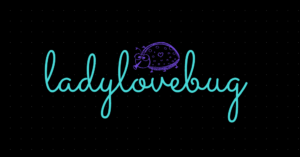We’re programmed to hold ourselves to a high standard—and many of us have a harder time forgiving ourselves than we do forgiving others. While self-forgiveness looks different for everyone and won’t happen overnight, here are some steps you can take to let go of the past and start the journey toward acceptance:
1. Recognize that the past is the past.
To learn how to forgive yourself, you must first acknowledge that the past is the past. This seems fairly straightforward, but when we can really wrap our head around the fact that we can’t undo the past—that the past is done, that those things happened—we open ourselves up to more acceptance.
2. Become clear on your morals and values as they are right now…
The reason most of us feel guilt or shame for our past actions is because those actions were not in line with our current morals and values. In this way, our previous wrongdoings can actually clue us in to what we hold now important. Think about what you value now and how that’s different from the past. This process will help you start to get a clearer picture as to why you’re hurting and get you closer on the path to self-forgiveness.
3. …then, start acting in accordance with them.
Commit to replacing the negative thoughts and behaviors with more appropriate ones that are in keeping with the morals and values you just identified. By so doing, you’ll reaffirm to yourself that you can handle situations the way you want to. This can lead to a sense of pride, which is a huge part of building self-esteem and forgiving yourself.
4. Remind yourself that you’re doing the best you can.
Our actions always depend on the skills we have, the frame of mind we’re in, and how we perceive a situation in the moment. Maybe when we made the mistake, we didn’t have as much objectivity or we acted out of survival mode. Maybe we’d let stress build up, which put us at a higher risk of responding poorly. Whatever the factors, cut yourself a break. If you learned from it, it wasn’t in vain.
4. Give yourself a “redo.”
Never underestimate the power of a “redo.” Write down how you would have done things differently if you could go back and do it again. In doing so, we affirm that we not only learned from our past mistake but that if we had the skills we have now, back then, we would have done things differently.
6. Identify your patterns of behavior that you regret.
When I work with clients on moving on from their past, it can be very overwhelming because they see so many regrets. It’s often helpful to categorize these and focus on patterns of behavior instead of individual regrets.
There may be some regrets that seem to come up again and again for you, and those are going to require some extra work. You might want to clear your conscience by actually calling up the person you wronged and apologizing to them.
8. Turn the page.
At some point, you have to accept that the past has happened, and you’ve done everything in your power to amend previous mistakes. It’s now time to turn the page and accept those events as part of your story. They’ve all contributed to making you who you are. Being grateful for those experiences allows you to move on and truly forgive yourself.
9. Cut yourself some slack.
When we learned how to ride a bike, most of us realized it would probably take a few tries before achieving perfection. New behavior and thinking patterns are no different. They’re both skills. Cut yourself some slack and recognize that you’re going to make mistakes–we all do.
10. Move toward self-love.
The last step to learning how to forgive yourself is building self-esteem. The best way to do that is practicing self-love. Think kind thoughts about yourself, and show yourself some compassion.
If self-love and self-acceptance do not come easy to you, consider working with a trained therapist for an outside perspective. You are more than your past mistakes.
https://www.mindbodygreen.com/0-11454/10-ways-to-forgive-yourself-let-go-of-the-past.html







